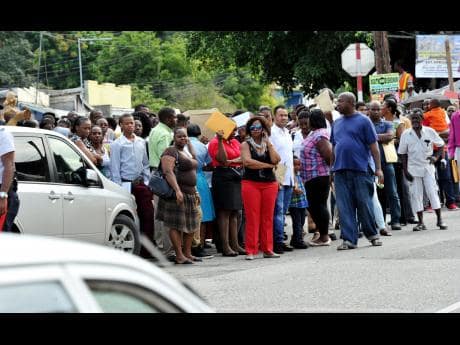SOURCE CNW: More than 12,000 Jamaican nationals overstayed their U.S. visas in 2023, according to the U.S. Department of Homeland Security’s newly released Entry/Exit Overstay Report for Fiscal Year 2023. The document reveals that Jamaica recorded a total overstay rate of 5.25%, more than triple the global average of 1.45%.
The report, which tracks nonimmigrant visitors arriving by air and sea only, specifically excludes land border entries — such as those from Canada or Mexico. As the report notes:
“This report provides data on departures and overstays by nonimmigrants who entered the United States through air or sea Ports of Entry (POEs) and who were expected to depart in FY 2023.”
For non-Visa Waiver Program countries — which includes Jamaica and most of the Caribbean — the average overstay rate was 3.2%, meaning Jamaica’s rate was well above the regional benchmark.
Haiti, meanwhile, recorded one of the highest overstay rates in the world, with 27,269 of 86,906 travelers overstaying their visas — a rate of 31.38%, the highest in the region. Guyana’s rate was also elevated at 5.59%, while the Dominican Republic’s stood at 4.59%.
Jamaica
- Expected Departures: 233,668
- Suspected In-Country Overstays: 11,931
- Total Overstays: 12,268
- Total Overstay Rate: 5.25%
- In-Country Overstay Rate: 5.11%
Haiti
- Expected Departures: 86,906
- Suspected In-Country Overstays: 26,995
- Total Overstays: 27,269
- Total Overstay Rate: 31.38%
- In-Country Overstay Rate: 31.06% ➡️ Highest rate among Caribbean nations and one of the highest globally.
Other Caribbean nations had much lower rates:
- The Bahamas: 1.43%
- Trinidad and Tobago: 0.77%
- Barbados: 0.52%
- Saint Lucia: 1.96%
- Antigua and Barbuda: 1.38%
The report defines an overstay as a traveler who remained in the U.S. beyond their authorized period of admission without receiving an extension or status adjustment. Importantly, not all overstays are confirmed — some are classified as “suspected in-country overstays.”
“A nonimmigrant traveler may be counted as an overstay if DHS cannot confirm their timely departure and has no evidence of an authorized stay beyond their admission period.”
While the report is primarily data-driven, it acknowledges the implications of high overstay rates. In general, an overstay rate above 2% is viewed as a potential red flag.
The document does not detail enforcement actions or penalties for countries with high rates. However, it notes that overstays can lead to visa ineligibility, entry bans, and stricter screening for future travelers.
Lastly, the report acknowledges possible data limitations:
“Some travelers may have departed the United States, but their departure could not be confirmed due to missing or incomplete data.”
In total, the U.S. recorded over 565,000 overstays out of nearly 39 million expected air and sea departures in FY 2023 — meaning 98.55% of travelers complied with their visa terms.
Laos, with an overstay rate of 34.77%, had the highest rate in the world, followed by Haiti, Congo (Brazzaville) – 29.63%; Myanmar – 27.07%; and Sudan – 26.30%.


